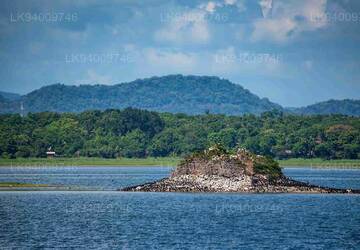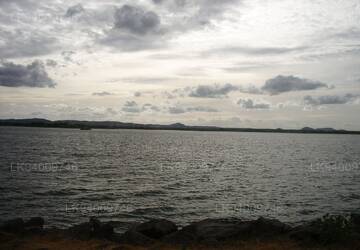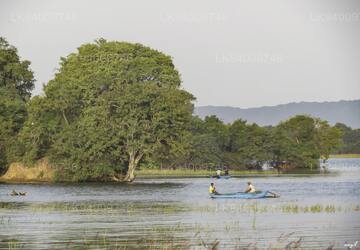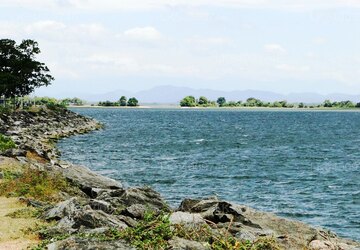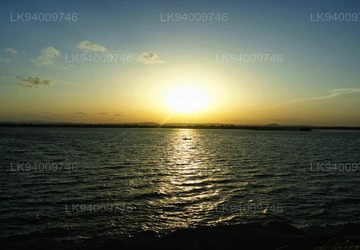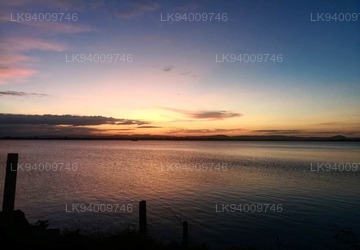
Polonnaruwa City
Polonnaruwa, a UNESCO World Heritage Site in Sri Lanka, was the country's medieval capital (11th-13th century). Renowned for its well-preserved ruins, including the iconic Gal Vihara statues, it showcases impressive architecture, reflecting the grandeur of the ancient Sinhalese civilization.
Parakrama Samudra
Parakrama Samudra: De Zee van koning Parakramabahu
Sri Lanka heeft twee grote moessonseizoenen, elk duurt ongeveer drie maanden. De rest van het jaar blijft droog en heet, behalve een paar korte door hitte veroorzaakte onweersbuien's nachts. Dit klimaat, met zijn gebrek aan regelmatig water, kan een verwoestend effect hebben op degenen die van de landbouw leven. Parakrama Samudra in Sri Lanka was zo'n oplossing voor het probleem van watergebrek.In een poging om dit probleem te verlichten, bouwden veel oude koningen reservoirs die water reguleren. Parakrama Samudra is ook zo'n constructie gebouwd in Polonnaruwa door koning Parakramabahu, de eerste die daar regeerde van 1153 na Christus tot 1153 na Christus. De Zee van Parakrama of Parakrama Samudra bestond oorspronkelijk uit vijf grote reservoirs die de druk op de hoofddam verlichtten. Het eerste reservoir Thopa Vewa bestond al in de tijd van koning Parakramabahu en werd gebouwd in 386 na Christus. De koning had de andere grote reservoirs erbij en het hele systeem werd uitgebreid. Daarnaast werden rond de primaire reservoirs veel kleinere reservoirs gebouwd om ze water te geven en overtollig water af te voeren.
Parakrama Samudra:De belangrijkste reservoirs van de originele Parakrama Samudra
1. Thopa Veewa
2. Eramudu Vewa (Katu Vewa)
3. Dumbuthula Vewa
4. Kalahagala Vewa
5. Bhu Vewa
Echter, tijdens reconstructies in de 19e eeuw begon het water dat naar Thopa Vewa werd gevoerd naar Bhu Vewa te stromen als gevolg van een nieuwe structurele fout. Met een mogelijkheid van vernietiging door overstromingen die boven hun hoofd hingen, namen de ingenieurs de snelle beslissing om een tijdelijke dam te bouwen om de waterstroom te stoppen. Helaas scheidde dit de laatste twee reservoirs, Kalahagala Vewa en Bhu Vewa, volledig van het systeem. De tijdelijke dam werd een permanente weg die de eerste drie stuwmeren isoleerde in een kleinere versie van de oorspronkelijk uitgestrekte Parakrama Samudra. Bovendien verminderden de reconstructies de capaciteit van het reservoir verder doordat de complexe oude technologie waarmee het was gebouwd volledig werd genegeerd.
Parakrama Samudra: De huidige afmetingen van Parakrama Samudra
Lengte: 14 km (8 ½ mijl) Hoogte van buitenaf: 12,2 m (40 voet) Gemiddelde diepte: 25 voet
About Polonnaruwa District
Polonnaruwa is the 2nd largest city in north central province in Sri Lanka. The ancient city of Polonnaruwa has been declared a World Heritage site by UNESCO Polonnaruwa has a great history of conquest and struggle behind it and rightfully forms the third element in the Cultural Triangle. Located about 140 kms north east from Kandy,Polonnaruwa offers hours of endless pleasure for history and culture lovers, as there are numerous sights of significance.
Much of the physical ruins standing today are credited to King Parakrama Bahu I who spent many royal resources on town planning, including parks, edifices, irrigation systems and so on. The period of his rule is considered a golden age where the kingdom thrived and prospered under a visionary ruler. The Parakrama Samudra is a mammoth tank and named after its patron. The popular kings Royal Palace, the Audience Hall encircled by beautifully carved stone elephants and the Bathing Pool reflect the superior engineering capabilities of the time.
About North Central Province
North Central Province which is the largest province in the country covered 16% of total country's land area. North Central Province consist two districts called Polonnaruwa and Anuradhapure. Anuradhapura is the largest district in Sri Lanka. Its area is 7,128 km².
North Central Province has numerous potentials for Investors to start their Businesses, especially Agriculture, agro based industries and Livestock sectors. More than 65% of North Central Province's people depend on basic Agriculture and agro base industries. NCP also called "Wew Bendi Rajje" because there are more than 3,000 medium and large scale tanks situated in the province. Sri maha bodiya, Ruwanweli seya, Thuparama dageba, Abayagiri Monastry, Polonnaruwa Rankot wehera, Lankathilake are scared

